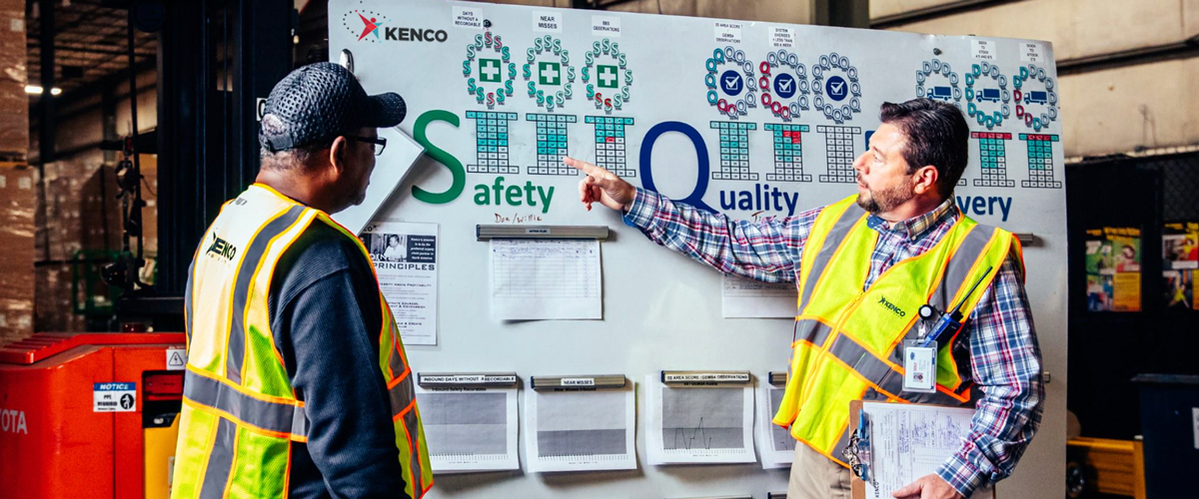
According to the U.S. Bureau of Labor Statistics, approximately 4.6 workers out of every 100 were injured on the job in the warehousing and transportation industry in 2021, up from 4 out of every 100 in 2020. Driven by rising consumer expectations, a pandemic-triggered spike in eCommerce activity, talent shortages, and more, warehouses faced immense pressure to deliver while supply chains grew increasingly complex. The need to invest in safe and secure workplaces has only grown in recent years. In fact, Amazon, the world’s largest retailer, invested $300 million in safety improvements in 2021, including capital improvements, new safety technology, vehicle safety controls, and engineering ergonomic solutions.
In this blog post, we cover some of the most common safety hazards in warehouses, and outline 3 reasons why businesses should invest to create top-tier safety programs.
Top Warehouse Safety Risks
Warehouses inherently impose safety risks on workers—some that can cause serious or even fatal injuries. A critical component in managing safety and preventing injury is employee awareness of potential hazards.
Forklifts and Heavy Machinery
According to The National Safety Council, forklifts caused 70 work-related deaths in 2021 and 7,290 nonfatal injuries in 2020. Improper use, accidental turnover, and running off loading docks are some of the reasons forklifts pose danger in a warehouse setting. Conveyors have also been known to cause injury when employees get accidentally caught in pinch points.
Repetitive Strain Injuries
Musculoskeletal disorders (MSDs) related to ergonomics remain the number one cause of injury in the warehousing industry today. Warehouse workers are especially prone to repetitive strain injuries (RSIs) due to the immense physical labor involved in their jobs.
Materials Storage
When materials aren’t stored properly, severe injuries can occur from heavy items falling on workers, employees tripping on obstructed pathways, and even explosions.
Electrical Hazards
Electrical tools, equipment, and extension cords are all important elements in operating a warehouse. Warehouse managers should enforce safety procedures like grounding equipment properly and ensuring power cords aren’t blocking walkways, or risk electric shock and dangerous fire hazards.
In 2018, U.S. businesses paid over $1 billion per week to compensate for worker injuries.
3 Reasons to Invest in Your Safety Programs
According to the Occupational Safety and Health Administration (OSHA), the average return on workplace safety programs is $4 to $6 for every $1 invested. Compare this statistic to the estimated cost of over $1 billion per week that businesses paid in 2018 for worker injuries, and it’s clear that investing in safety pays.
Businesses that invest in safety have a happier, more productive workforce, and a strategic advantage when it comes to hiring, lowering injury-related costs, and driving long-term business viability.
According to the Occupational Safety and Health Administration (OSHA), the average return on workplace safety programs is $4 to $6 for every $1 invested.
Reason #1: Attract and Retain Top Talent
In a survey of over 6,000 U.S. truck drivers, results showed that perceptions of safety in work environments were highly linked to their level of job satisfaction, engagement, and turnover rate. Employees that report feeling safe in their work environments are happier, more productive, and stay longer. In a tight labor market, a mature culture that promotes safety will be the differentiator to attract and retain top talent.
Businesses that invest in safety have happier, more productive employees, a strategic advantage when it comes to hiring, lower injury-related costs, and better long-term business viability.
Reason #2: Avoid Costs
According to research and data from Liberty Mutual and the U.S. Bureau of Labor
Statistics, the top five causes of injury in the transportation and warehousing industry account for over $3.91 billion in annual costs, encompassing expenses like medical bills, insurance premiums, compensation payouts, equipment repairs, and hefty penalties from The U.S. Occupational Safety and Health Administration (OSHA). While the financial burden is significant, the indirect costs to the employee’s mental and physical health, as well as to their families and loved ones, are even greater.
Reason #3: Protect Your Business Long-Term
Safety has a tremendous impact on the long-term sustainability of your business. Incidents and on-the-job injuries can not only cause major disruptions to day-to-day operations, but can also have compounding negative effects on your customers and reputation. Customers and reputation aside, your business’ right to operate may be in jeopardy if it’s found in non-compliance with federal safety regulations mandated and enforced by OSHA.
Streamlining Operator-Supervisor Communications with Kenco
As part of Kenco’s safety management program, managers are provided with a direct line of sight into what operators are seeing and experiencing on a daily basis. Operators are enabled to speak up through suggestions or concern reports, and are able to schedule structured assessments, like 5S and Gemba Walks, with managers and other stakeholders. This open line of communication allows the entire team to anticipate and take action to mitigate potential safety hazards in the environment.
Where To Invest
A successful safety program requires continuous effort and investment to maintain and is one of the most important initiatives your business will take on. Our latest eBook, 3 Key Investment Areas to Improve Your Warehouse Safety Program, dives deeper into investing in safety and provides recommendations on where to invest to improve your warehouse safety program for maximum impact. Download it here.
To learn more about our safety principles at Kenco, visit our Safety, Quality, & I.T. page.
